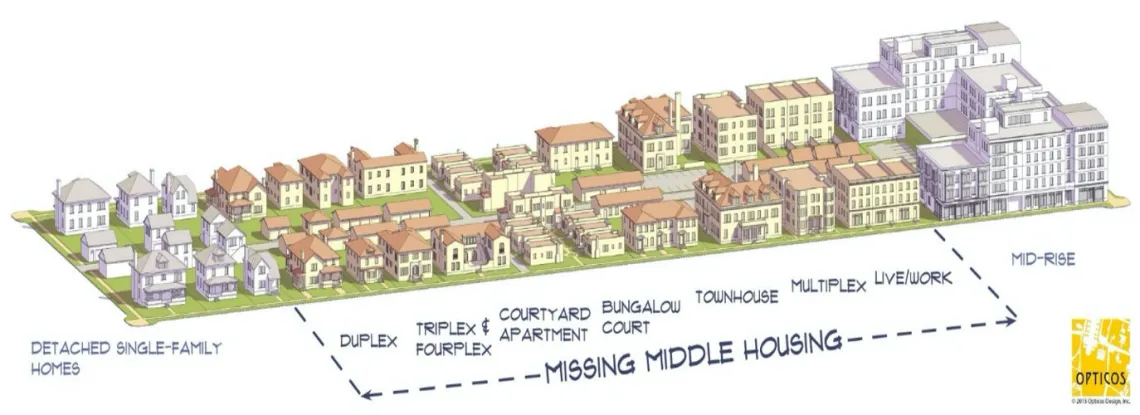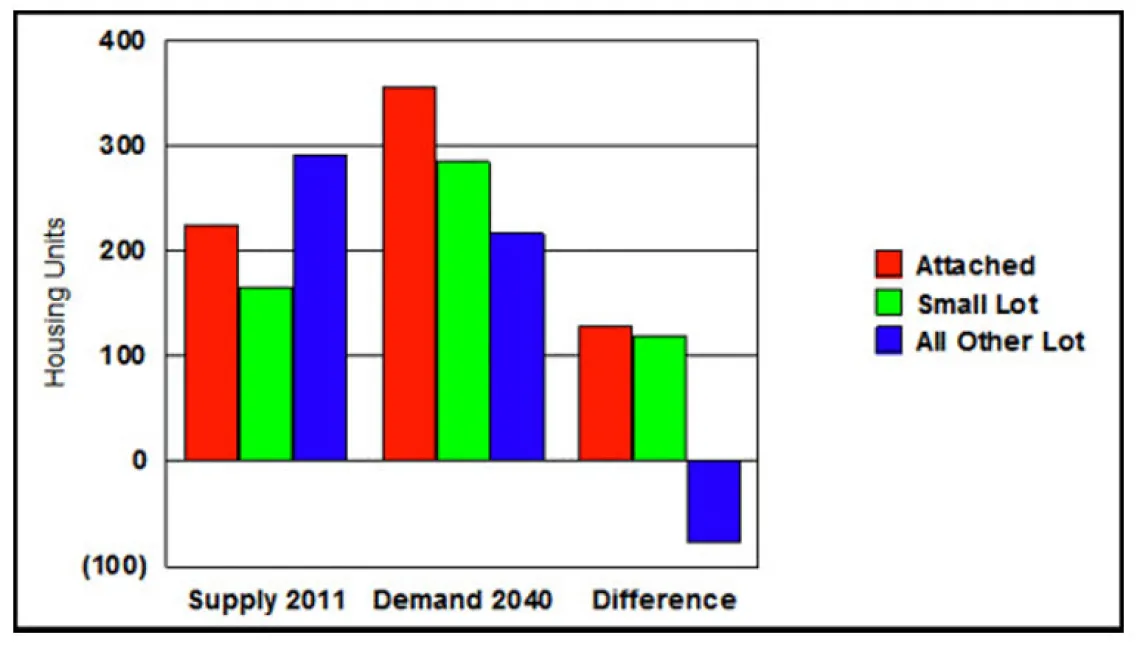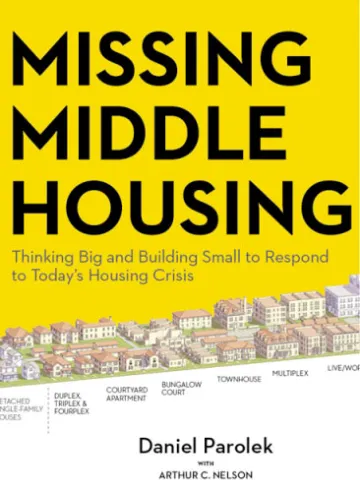New Kid in Town: Missing Middle Housing


Arthur C. Nelson, Professor of Urban Planning and Real Estate Development
There’s a new urban development concept in town—it’s called missing middle housing. And Arthur C. Nelson, professor of urban planning and real estate development in the College of Architecture, Planning and Landscape Architecture at the University of Arizona, had a big part in making it happen.
What’s “missing” in urban America is a form of housing between high-density apartments and condominiums in cities and low-density, single-family detached homes in the suburbs. We used to have “middle housing” in the form of duplexes, tri-plexes, four-plexes, bungalow courts, detached homes on very small lots and “mansion” apartments that are not bigger than a large house. They were integrated throughout most walkable pre-1940s neighborhoods.
But for more than 70 years, since the end of World War II, America has built mostly high-density city housing or low-density suburban housing. Housing in the middle is missing, hence missing middle housing.

Image courtesy Opticos.
Berkeley architect Dan Parolek was the first to coin the term in the early 2010s and apply it to urban infill and redevelopment projects in the Bay Area. It is now a national movement. A key part of Parolek’s inspiration for the market demand came from Nelson, who gained fame in the early 2000s for showing that America’s demand for single-family detached homes on large suburban lots was waning.
In a 2006 article published in the Journal of the American Planning Association, Nelson predicted the glut of detached homes that led in large part to the Great Recession. He projected that the single largest market segment for new housing would be for smaller homes on smaller lots, townhouses and other forms of low-rise attached homes. In Smart Cities Dive, Kaid Benfield wrote of Nelson: “When he talks, I listen.” Parolek did.

Housing supply by type in 2011 and 204, with difference. Graphic courtesy Arthur C. Nelson.
Parolek invited Nelson to contribute to his book Missing Middle Housing: Thinking Big and Building Small to Respond to Today’s Housing Crisis. It was published this summer by Island Press.
In Missing Middle Housing, Parolek illustrates the power of these housing types to meet today’s diverse housing needs. With the benefit of beautiful full-color graphics, Parolek goes into depth about the benefits and qualities of missing middle housing. The book demonstrates why more developers should be building missing middle housing and defines the barriers cities need to remove to enable it to be built. A chapter from Nelson uses data analysis to highlight the urgency to deliver missing middle housing.

In the introduction to his chapter, Nelson writes: "Sweeping demographic changes will occur (to 2040) that will continue to increase the demand for missing middle housing. Tens of millions of Baby Boomers (born between 1946 and 1964) as well as Generation Xers (born between 1965 and 1980) will become empty nesters and singles. Many, perhaps most of them, will want to exchange their large homes on large lots for smaller homes on smaller lots or attached homes. Tens of millions of millennials—born between 1981 and 1997—will be forming households with children but may not want to buy boomers’ large-lot homes, opting instead for smaller homes on smaller lots or attached homes. The newest generation—Generation Z, born between 1998 and 2015—will become starter-home households seeking mostly attached homes and then mature into multi-adult households. Unlike prior generations, most of these Baby Boomers, Generation Xers, millennials, and Generation Zers will prefer to live in walkable communities. Millions of householders prefer to live in walkable communities with many millions of them preferring missing middle housing. The problem is that even if every home built between 2020 and 2040 was built in walkable communities (including missing middle housing units and all other attached units), it simply will not be enough to meet the growing preference for housing in walkable communities. [Emphasis added.]"
Though he is the founder of the missing middle housing movement and its architectural/urban design principles, Parolek made Nelson a secondary co-author of his book in recognition of Nelson’s pioneering market research showing the market demand for missing middle housing.
Several states are considering legislation requiring forms of missing middle housing by right, with Oregon leading the way in 2019. Minneapolis, Minnesota and Seattle, Washington, also changed their zoning codes in 2019 to allow forms of missing middle housing by right. Others are sure to follow.
Nelson continues to shake things up. In a recent article, “The Great Senior Short-Sale or Why Policy Inertia Will Short Change Millions of America's Seniors”—the most downloaded article of the Journal of Comparative Urban Law and Policy, he shows that by the 2030s there may be more seniors trying to sell their homes than younger households willing or able to buy them. Learn more about Nelson’s research on how millions of unsellable homes could upend the market.
Nelson joined CAPLA in 2014 after serving as presidential professor and director of the Metropolitan Research Center at the University of Utah. As the author of nearly 30 books and more than 400 other scholarly publications and principal investigator or co-principal investigator of more than $50 million in grants, Nelson is ranked 9th nationally among more than 1,000 planning professors in the quality of published work based on scientific metrics.
Read CAPLA’s recent Q&A with Nelson: “Reshaping the Built Environment.”



